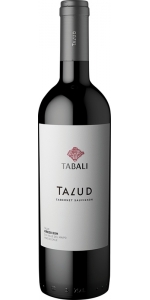Wine from Tabali
Tabali is a family winery founded by Guillermo Luksic in 2002 and today is led by his son Nicolás. Tabali, pioneer in the Limarí Valley, in the North of Chile, produces wines of terroir that express their place of origin with purity and precision.
Nicolás explains, “What we are seeking is to produce high-quality wines that reveal their origin and transport the person tasting them to the soil and climate of Tabali’s vineyards. That’s what my father always wanted to transmit.”
Tabali has for years been a pioneer and the most iconic winery in the Limarí Valley. Company president Nicolás Luksic is continuing in the footsteps of his father, Guillermo Luksic, who founded the winery in 2002, in ensuring that the places chosen for each variety have a singularity that is reflected in each wine.
Guillermo Luksic was the first businessman to build a modern winery in the Limarí valley. He had a special affection for Ovalle because his mother, Ena Craig, studied at the Amalia Errázuriz school there and from early childhood he used to visit the area with family and friends. He was very sentimental about his mother and once said “I want to have land in Ovalle because it’s a fascinating area with its climate and temperature and it’s also very pretty”.
Thus in the early 1990s, Guillermo bought the Hacienda Santa Rosa de Tabali located next to the Enchanted Valley (National Monument) and, in 1993, he planted his first vineyards there. The first
Tabali brand wines were launched in 2002 and their high quality rapidly earned them recognition both in Chile and in international markets.
In 2009, after years of geological studies and experimentation in its ongoing quest for innovation and excellence in the quality of its wines, the winery acquired the Talinay vineyard.
This vineyard is located next to the Fray Jorge National Park and forms part of the UNESCO World Biosphere Reserve. Just 12km from the coast, this is the Limarí valley vineyard that is closest to the ocean. It took Chile by surprise when the Pinot Noir, Sauvignon Blanc and Chardonnay wines from its first harvest were named the best in Chile.
Intending to seek new terroirs in the valley, the company bought Hacienda El Bosque in the mountainous sector of Río Hurtado in 2010. Here it planted a vineyard at an altitude of 1,600 meters, which made Tabali the only winery to own vineyards from the ocean to the mountains in the same valley.
Finally, in 2014, under the leadership of Nicolás Luksic, Tabali acquired the DOM vineyard, one of the best and most exclusive Cabernet Sauvignon vineyards in the Maipo valley with the singular characteristic of being located in the Coastal Mountain range on south-facing slopes of colluvial soils. This vineyard offers new opportunities for the winery, which has finally decided to expand its portfolio and explore other wine regions.
A slope (un talud) leading up to a mountain where centuries of rock falls have left the soil beneath full of large angular rocks, and therefore useless for most agriculture. Deposited hugger-mugger amongst the clay and sand however, they offer perfect drainage and allow vines to grow, forcing their roots ever downwards in search of water, picking up minerals along the way. If you wanted to explain to someone what Cabernet Sauvignon tasted like, you could do a lot worse than showing them this beautiful expression of the variety which demonstrates great purity, concentration and elegance.
Review:
Talud is from the oldest cabernet sauvignon vineyards on Tabalí’s estate in the coastal Maipo zone, 50 kilometers from the Pacific, planted in 1999. The soils are colluvial, which often deliver firm, pointed tannins, and those are present here, but they’re very nicely accompanied by juicy red fruit and bright acidity that allows this wine to put its fresh, vibrant facet in the foreground. Take note, however, there are deep, dense flavors here. It’s still a very young cabernet, so make room in the cellar.
-Patricio Tapia - Descorchados 95 Points
- back
Selected Options
Wineries
Categories
Pricing
Countries
Regions
Grape Types
Wineries
Organic/Free Shipping
Guillemot-Michel Vire Clesse (magnum) is made from 100 percent Chardonnay.
Beautifully expressive, with yellow fruits, orange blossom, smoke & flint. Thick and saline on entry, then seriously deep in the mid-palate, with suggestions of exotic fruits perfectly countered by strong minerality. This wine strikes a perfect balance between sweet and salty elements, and it shows vibrant acidity. It boasts a thickness that few other northern Mâconnais can match.
Enjoy with fish (such as sole meuniere), seafood, roasted chicken, goat cheese.
La Despensa Boutique Pool Blend 75% Cinsault, 15% Pais, 5% Marsanne and 5% Roussanne.
A genuinely unique wine - La Despensa is the only producer of Cinsault in Colchagua and Pais from this valley is also extremely rare! The Cinsault and the 2 whites come from a new vineyard planted in 2017 and the Pais from a 150 year old, dry-farmed vineyard in Pumanque about 20 minutes from the winery that they run themselves organically. The Cinsault and Pais give notes of raspberry and strawberry and the white Roussanne and Marsanne a little mouthfeel and a hint of tropical fruit.
Organically grown grapes (not certified) from our own vineyard in Santa Ana, and Pumanque in the Colchagua Valley. Irrigated as sparingly as possible via drip irrigation (dry-farming for the 150 year old Pais). Hand harvested and sorted personally by me in the vineyard (I personally check every single bunch), then destemmed with the crusher removed from the destemmer. Grapes are fermented in open top bins and concrete tank and blended immediately after pressing. MLF occurs with the wine already blended. Wines are racked in November and again in January before being bottled after about 10 months ageing in 50% neutral oak barrels and 50% Flextank.
Versatile, goes well with beef, chicken, pasta, great for Summer BBQs.





